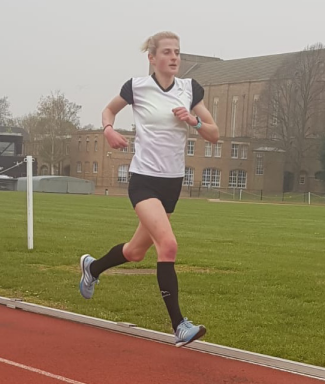Middle Distance Endurance Training
Middle distance runners need to train to develop their anaerobic and aerobic fitness as both energy systems make a great contribution to energy supply during middle distance races. This is done through speed endurance sessions and building an aerobic endurance base.
Speed Endurance
Speed endurance is the length of time an athlete is able to run at near maximum velocity without tiring. Obviously the longer this time is the further and faster you will go!
A speed endurance session will stress both the aerobic and anaerobic systems, leading to training adaptations in both. Speed endurance sessions are similar to speed/sprint training in that high intensity efforts are needed, however, the length of repetitions need to be longer and the recoveries should be shorter. Repetitions should last at least 30 seconds but can be as long as 3 minutes, the athlete needs to be working near maximal intensity to train the body to run at faster speeds over longer distances. The shorter recoveries prevent complete recovery between repetitions. All in all making speed endurance some of the toughest sessions a middle distance runner can do!
Examples of sessions could include 400m repeats with 2-3 minute recoveries or sets of 200m at race pace with 30 seconds to a minute recoveries.

Photo Track training
Aerobic Endurance
Building a good aerobic fitness base is very important to all middle distance runners. The primary focus of this work is to develop aerobic fitness, improve running efficiency and provide natural conditioning for the body (without going anywhere near a gym!). It is achieved through lower intensity training over higher volumes (distances).
In middle distance athletes, this is often built up over the winter months before shifting the focus more towards speed endurance and speed work in the summer months. However some levels of aerobic endurance training must be maintained during the racing season. The middle distance runners of old would often cover high weekly mileages in winter (up to 70 miles which is not dissimilar to a longer distance runner) before decreasing this significantly in the summer, racing months.

Photo Running in the woods
The benefit of aerobic base work is to improve overall fitness and leg strength, this increases an athletes capacity to tolerate repeated high intensity training sessions, minimising fatigue between sessions and reducing injury. It also prepares them to cope with the demands of regular racing throughout the summer season.
Aerobic endurance is most commonly trained with steady runs interspersing the harder session days. These runs can range from as short as 30 minutes up to longer, more steady runs of 70-80 minutes depending on the age and willingness of the athlete!
Some middle distance athletes also do some cross country races in the winter as a way of building fitness and general leg strength, although others give this a miss in favour of having an indoor season. Also useful are slower interval reps and fartlek training, the latter of these being a mixed pace long run. Commonly, this would involve effort and recovery periods of a set length of time - for example 2 minutes easy running and then 2 minutes of effort.

Photo Mountain biker
It can also be useful, particularly for the avoidance of injury, to build your aerobic base with some cross-training, doing other sports such as swimming, cycling or team games. But, cross-training should mainly be used early in the training period as specific running will be more useful as it comes up to competition time.
